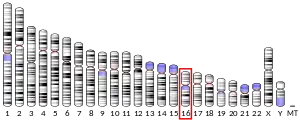| PDPR | |||||||||||||||||||||||||||||||||||||||||||||||||||
|---|---|---|---|---|---|---|---|---|---|---|---|---|---|---|---|---|---|---|---|---|---|---|---|---|---|---|---|---|---|---|---|---|---|---|---|---|---|---|---|---|---|---|---|---|---|---|---|---|---|---|---|
| Identifiers | |||||||||||||||||||||||||||||||||||||||||||||||||||
| Aliases | PDPR, PDP3, pyruvate dehydrogenase phosphatase regulatory subunit | ||||||||||||||||||||||||||||||||||||||||||||||||||
| External IDs | OMIM: 617835 MGI: 2442188 HomoloGene: 9948 GeneCards: PDPR | ||||||||||||||||||||||||||||||||||||||||||||||||||
| |||||||||||||||||||||||||||||||||||||||||||||||||||
| |||||||||||||||||||||||||||||||||||||||||||||||||||
| |||||||||||||||||||||||||||||||||||||||||||||||||||
| |||||||||||||||||||||||||||||||||||||||||||||||||||
| |||||||||||||||||||||||||||||||||||||||||||||||||||
| Wikidata | |||||||||||||||||||||||||||||||||||||||||||||||||||
| |||||||||||||||||||||||||||||||||||||||||||||||||||
Pyruvate dehydrogenase phosphatase regulatory subunit is a protein that in humans is encoded by the PDPR gene.[5]
Structure
The complete cDNA of PDPR, which contains 2885 base pairs, has an open reading frame of 2634 nucleotides encoding a putative presequence of 31 amino acid residues and a mature protein of 847. Characteristics of native PDPR include ability to decrease the sensitivity of the catalytic subunit to Mg2+, and reversal of this inhibitory effect by the polyamine spermine. A BLAST search of protein databases revealed that PDPr is distantly related to the mitochondrial flavoprotein dimethylglycine dehydrogenase, which functions in choline degradation.[6]
Function
The mitochondrial pyruvate dehydrogenase complex (PDC) catalyzes the oxidative decarboxylation of pyruvate, linking glycolysis to the tricarboxylic acid cycle and fatty acid (FA) synthesis. Knowledge of the mechanisms that regulate PDC activity is important, because PDC inactivation is crucial for glucose conservation when glucose is scarce, whereas adequate PDC activity is required to allow both ATP and FA production from glucose. The mechanisms that control mammalian PDC activity include its phosphorylation (inactivation) by a family of pyruvate dehydrogenase kinases (PDKs 1–4) and its dephosphorylation (activation, reactivation) by the pyruvate dehydrogenase phosphatases (PDPs 1 and 2).[7]
Clinical significance
As PDPR is involved in the regulation of the central metabolic pathway, its participation in disease pathophysiology is likely, but there has been no published research on this thus far.[5]
References
- 1 2 3 GRCh38: Ensembl release 89: ENSG00000090857 - Ensembl, May 2017
- 1 2 3 GRCm38: Ensembl release 89: ENSMUSG00000033624 - Ensembl, May 2017
- ↑ "Human PubMed Reference:". National Center for Biotechnology Information, U.S. National Library of Medicine.
- ↑ "Mouse PubMed Reference:". National Center for Biotechnology Information, U.S. National Library of Medicine.
- 1 2 "Entrez Gene: Pyruvate dehydrogenase phosphatase regulatory subunit".
- ↑ Lawson JE, Park SH, Mattison AR, Yan J, Reed LJ (December 1997). "Cloning, expression, and properties of the regulatory subunit of bovine pyruvate dehydrogenase phosphatase". The Journal of Biological Chemistry. 272 (50): 31625–9. doi:10.1074/jbc.272.50.31625. PMID 9395502.
- ↑ Sugden MC, Holness MJ (May 2003). "Recent advances in mechanisms regulating glucose oxidation at the level of the pyruvate dehydrogenase complex by PDKs". American Journal of Physiology. Endocrinology and Metabolism. 284 (5): E855-62. doi:10.1152/ajpendo.00526.2002. PMID 12676647.
Further reading
- Sugden MC, Holness MJ (May 2003). "Recent advances in mechanisms regulating glucose oxidation at the level of the pyruvate dehydrogenase complex by PDKs". American Journal of Physiology. Endocrinology and Metabolism. 284 (5): E855-62. doi:10.1152/ajpendo.00526.2002. PMID 12676647.
- Chen X, Li X, Wang P, Liu Y, Zhang Z, Zhao G, Xu H, Zhu J, Qin X, Chen S, Hu L, Kong X (August 2010). "Novel association strategy with copy number variation for identifying new risk Loci of human diseases". PLOS ONE. 5 (8): e12185. Bibcode:2010PLoSO...512185C. doi:10.1371/journal.pone.0012185. PMC 2924882. PMID 20808825.
- Ohara O, Nagase T, Mitsui G, Kohga H, Kikuno R, Hiraoka S, Takahashi Y, Kitajima S, Saga Y, Koseki H (April 2002). "Characterization of size-fractionated cDNA libraries generated by the in vitro recombination-assisted method". DNA Research. 9 (2): 47–57. doi:10.1093/dnares/9.2.47. PMID 12056414.
- Lawson JE, Park SH, Mattison AR, Yan J, Reed LJ (December 1997). "Cloning, expression, and properties of the regulatory subunit of bovine pyruvate dehydrogenase phosphatase". The Journal of Biological Chemistry. 272 (50): 31625–9. doi:10.1074/jbc.272.50.31625. PMID 9395502.



